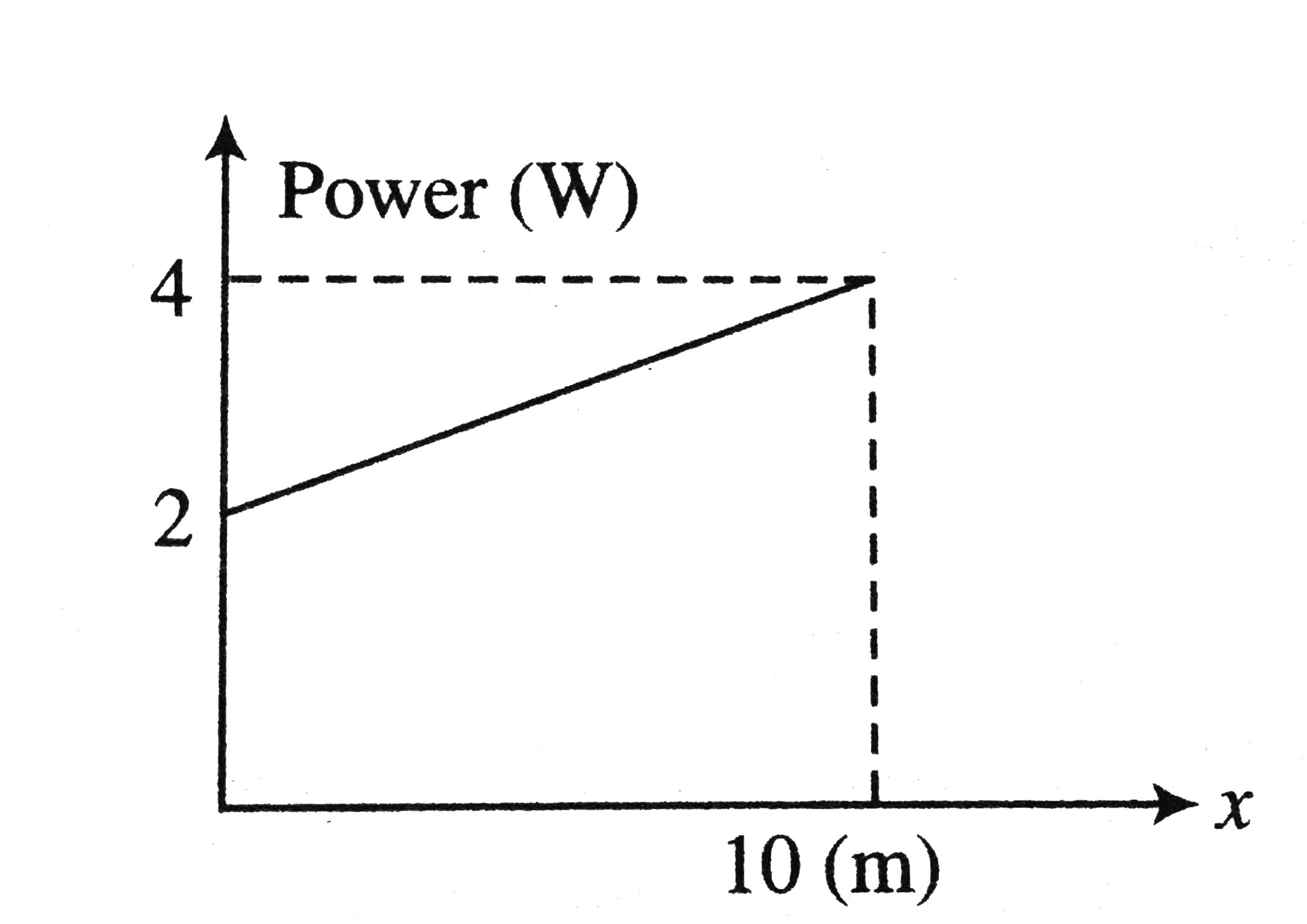A particle of mass 10−2kg is moving along the positive x axis under the influence of a force F(x)=−K/(2x2) where K=10−2Nm2. At time t=0 it is at x=1.0m and its velocity is v=0.
(a) Find its velocity when it reaches x=0.50m.
(b) Find the time at which it reaches x=0.25m.
The correct Answer is:A, B, C, D
To solve the problem step by step, let's break it down into parts (a) and (b) as given in the question.
Given Data:
- Mass of the particle, m=10−2kg
- Force acting on the particle, F(x)=−K2x2 where K=10−2Nm2
- Initial position, x0=1.0m
- Initial velocity, v0=0
Part (a): Find the velocity when the particle reaches x=0.50m.
1. Using the work-energy principle:
The work done by the force when the particle moves from x0 to x is equal to the change in kinetic energy.
W=ΔKE=12mv2−12mv20
Since v0=0, we have:
W=12mv2
2. Calculate the work done:
The work done by the force can be calculated as:
W=∫xx0F(x)dx=∫0.51−K2x2dx
Evaluating the integral:
W=−K2∫0.511x2dx=−K2(−1x)0.51
W=−K2(−2+1)=−K2⋅(−1)=K2
Substituting K=10−2:
W=10−22=5×10−3J
3. Setting the work equal to the change in kinetic energy:
12mv2=5×10−3
Substituting m=10−2:
12(10−2)v2=5×10−3
10−2v2=10−2
v2=1⟹v=−1m/s(negative because the particle is moving in the opposite direction)
Part (b): Find the time at which it reaches x=0.25m.
1. Using the velocity expression:
We derived the velocity in terms of position earlier:
v=−√Km(1x−1)
For x=0.25:
v=−√10−210−2(10.25−1)=−√1⋅(4−1)=−√3
2. Relating velocity to time:
v=dxdt⟹dt=dxv
dt=dx−√3(as velocity is negative)
3. Integrate from x0=1 to x=0.25:
t=∫0.251dx−√3=−1√3(x)0.251
t=−1√3(0.25−1)=0.75√3≈0.433s
Final Answers:
(a) The velocity when the particle reaches x=0.50m is −1m/s.
(b) The time at which it reaches x=0.25m is approximately 0.433s.
- Mass of the particle, m=10−2kg
- Force acting on the particle, F(x)=−K2x2 where K=10−2Nm2
- Initial position, x0=1.0m
- Initial velocity, v0=0
The work done by the force when the particle moves from x0 to x is equal to the change in kinetic energy.
The work done by the force can be calculated as:
We derived the velocity in terms of position earlier:
(a) The velocity when the particle reaches x=0.50m is −1m/s.
Topper's Solved these Questions
- HEAT AND THERMODYNAMICSBOOK - SUNIL BATRA (41 YEARS IITJEE PHYSICS)CHAPTER - HEAT AND THERMODYNAMICSEXERCISE - JEE Main And Advanced
219 Videos
- MECHANICAL PROPERTIES OF MATTER AND FLUIDSBOOK - SUNIL BATRA (41 YEARS IITJEE PHYSICS)CHAPTER - MECHANICAL PROPERTIES OF MATTER AND FLUIDSEXERCISE - Subjective Problems
1 Videos
Similar Questions
A particle moves along the X-axis from x=0→x=5m under the influence of a force given by F=(7−2x+3x2). Find the work done in the process.
View SolutionA particle moves along the X-axis from x=0 to x=5 m under the influence of a force given by F=7−2x+3x2. Find the work done in the process.
View Solution
Knowledge Check
A particle moves along the X-axis x=0 to x=5 m under the influence of a force given by F=10−2x+3x2. Work done in the process is
A70 unitsB270 unitsC35 unitsD150 unitsA particle moves along X-axis from x=0 to x=1 m under the influence of a force given by F=3x2+2x−10. Work done in the process is
A+4JB−4JC+8JD−8JA particle A of mass 10/7kg is moving in the positive direction of x−aξs. At initial position x=0, its velocity is 1ms−1, then its velocity at x=10m is (use the graph given)
 A(a) 4ms−1B(b) 2ms−1C(c) 3√2ms−1D(d) 1003ms−1
A(a) 4ms−1B(b) 2ms−1C(c) 3√2ms−1D(d) 1003ms−1
A particle moves along x-axis from x=0 to x=2 m under the influence of a force F (in N) given by F=3x2+2x−5. Calculate the work done
View SolutionA particle starts moving along the x-axis from t=0, its position varying with time as x=2t3−3t2+1.
a. At what time instants is its velocity zero?
b. What is the velocity when it passes through the origin?
View SolutionA particle moves along the x-axis from x=0 to x=5m under the influence of a given by
F=7−2x+3x2. The instantaneous power applied to the particle is.
View SolutionA body of mass m, moving along the positive x direction is subjected to a resistive force F=Kv2 (where K is a constant and v the particle n velocity). If m=10kgv=10m/s at t=0, and K=2N(m/s)−2 the velocity when t=2s is:
View SolutionA particle is moving along the x-axis with an acceleration a = 2x where a is in ms–2andx is in metre. If the particle starts from rest at x=1 m, find its velocity when it reaches the position x = 3.
View Solution
